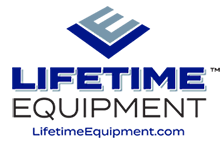ACCORDING TO ARIZTON’S LATEST RESEARCH REPORT, THE ROBOTIC FLOOR SCRUBBER MARKET WILL GROW AT A COMPOUND ANNUAL GROWTH RATE (CAGR) OF 13.26 PERCENT FROM 2022-2028.
The technological advances and continuous investment in research & development by various vendors create significant growth opportunities for players in the robotic floor scrubber market. The vendors continuously focus on improving their offerings per the end-user requirements. For instance, in 2020, Tennant and Nilfisk invested around 3 percent and around 2.8 percent of their net sales in R&D for developing innovative products. Hence, this will likely provide an edge to the vendors over other players in the market.
Robotic floor scrubbers are powered by mobile software, enabling users to track cleaning data and maximize cleaning performance. This enables facility managers to pinpoint areas for improvement, boost productivity, achieve maximum performance, and ensure health and safety. The company’s image of being innovative and forward-thinking is enhanced by using the robotic cleaning solution. Therefore, it is anticipated that demand for robotic floor scrubbers will grow significantly during the forecast period.
Pandemic Impact
The COVID-19 pandemic has shifted how businesses and organizations approach cleaning and hygiene, which has become more important than ever. Robotic floor scrubbers have become an important tool in the fight against the spread of COVID-19, as they can help to reduce the risk of infection by providing a more efficient and consistent cleaning solution. Robotic floor scrubbers can be integrated with other technologies, such as sensors and data analytics, to provide a more effective and efficient cleaning solution. This integration can be particularly useful in monitoring and managing hygiene levels in high-traffic areas, such as hospitals and airports.
The COVID-19 pandemic has provided an important catalyst for developing robotic floor scrubbers, highlighting the need for innovative solutions that can help businesses and organizations maintain high levels of hygiene and cleanliness in the face of new challenges.
Direct sales channels to dominate the global robotic floor scrubber market. The segment is expected to grow at a significant rate. In direct sales, vendors sell their products directly through inbound and outbound sales efforts. There are several sales representatives categorized into inside sales and field sales teams. These sales representatives utilize a highly structured and consistent sales process to educate potential customers about the vendors’ offerings and help expand the company’s customer base. The demand for robotic floor scrubbers is growing rapidly due to the rising demand for productivity and efficiency. Hence this is likely to boost direct sales during the forecast period. North America is leading the market with direct robotic floor scrubber sales.
Vendors with a prominent international presence dominate the market. Many international players are expected to expand their reach worldwide during the forecast period, especially in the fast-developing countries across APAC and Latin America. Nilfisk extended its presence in the Australian market by acquiring Kerrick, a heavy-duty, commercial, and industrial cleaning equipment provider. Nilfisk has also acquired China-based Viper Group to gain a leading position in the rapidly growing Chinese market. The combined Nilfisk-Viper entity now has a global presence in around 36 countries.
Several vendors in the market are manufacturing robotic floor scrubbers with innovative product specifications. Consumers expect commercial cleaning equipment to have a higher capacity with a lightweight structure, low noise, and longer battery life. Consumers can easily use low-noise equipment for daytime cleaning and in noise-sensitive areas. Companies like Kärcher collaborate with start-ups and provide venture capital investments to explore new technologies and business models. The constant incorporation of technological innovations in products by global and domestic leaders is expected to intensify the competition among manufacturers.





